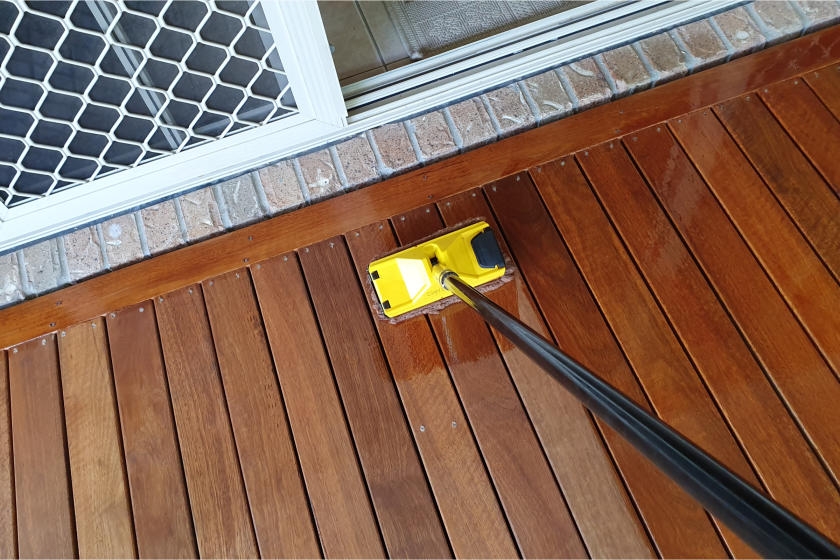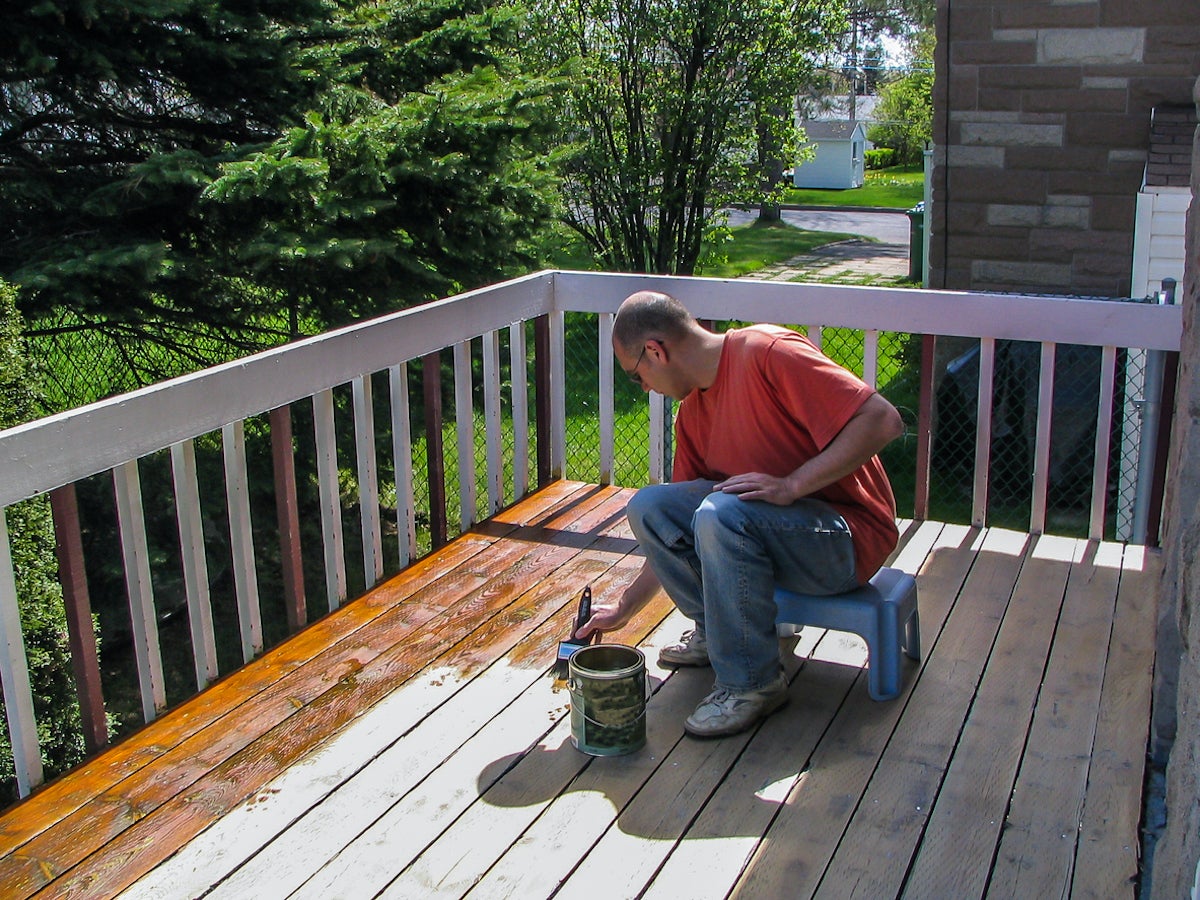Choosing the Right Deck Stain: Improve and Safeguard Your Deck
Choosing the Right Deck Stain: Improve and Safeguard Your Deck
Blog Article
A Comprehensive Guide to Various Sorts Of Deck Staining Techniques for Ultimate Protection and Appearances
In the realm of deck upkeep, the art of tarnishing stands as an essential action in the direction of both maintaining the honesty of your outside space and improving its visual appeal. As we navigate through the detailed globe of deck staining techniques, one begins to value the nuanced approaches that can make all the distinction between a mediocre finish and a perfect one. From the option of the suitable stain kind to the thorough application techniques, each element plays an important role in attaining that ideal balance in between security and aesthetic appeals. Join us as we reveal the keys behind accomplishing the utmost deck discoloration results-- a journey where every brushstroke forms not just the surface, however the extremely essence of your outdoor sanctuary.
Understanding Different Sorts Of Discolorations
Numerous types of discolorations are commonly used in the process of deck staining to achieve various visual and safety impacts. On the other hand, semi-transparent stains supply an equilibrium between shade enhancement and protection, enabling some timber grain to reveal through.
Toners include a tip of color to the timber while providing marginal defense, making them suitable for more recent decks with less wear. Understanding the attributes and advantages of each type of discolor is important for accomplishing the desired appearance and longevity for your deck.
Picking the Right Stain Color
When thinking about the aesthetics of your deck discoloration task, the selection of tarnish color plays a critical function in boosting the protective qualities of the picked stain type (Beautiful Deck). The color you select can substantially impact the total appearance of your deck, as well as its capacity to hold up against the aspects over time
When choosing a stain color, it's important to consider the existing color design of your home's outside. Integrating the deck tarnish with the general visual of your building can develop a aesthetically enticing and cohesive outdoor room. In addition, the color of your deck tarnish can affect the temperature level of the deck surface area; darker shades tend to soak up even more heat, while lighter colors show sunshine and stay cooler.
Furthermore, the type of wood you are tarnishing will likewise influence how the discolor shade appears. Various timber species can interact with the stain in numerous means, possibly altering the last shade. It's suggested to evaluate the discolor on a tiny, unnoticeable location of the deck to make certain the color ends up as preferred prior to proceeding with the whole project.
Preparing Your Deck for Discoloration
To make certain a effective and long-lasting deck discoloration task, thorough preparation of the deck surface area is crucial. Begin by cleansing the deck extensively to get rid of dust, gunk, mildew, and any old tarnish or end up.
Check the deck for any damaged or rotten boards that require to be changed. Hammer down any kind of sticking out nails and sand any kind of harsh locations to ensure a smooth surface for discoloration. Look for any kind of loosened barriers or actions that might need tightening or repair.
Once the deck is clean, completely dry, and in good repair work, consider using a wood brightener to bring back the deck's natural shade and open up the timber pores for much better stain infiltration. Finally, protect any type of close-by plants, furniture, or surface areas with plastic bed linen prior to continuing with the staining procedure. Appropriate preparation go to this site is essential to attaining a professional-looking finish and taking full advantage of the durability of your deck stain.
Using Discoloration With Numerous Techniques
For a remarkable and professional surface, the approach of using tarnish plays a vital role in enhancing the appearance and sturdiness of your deck. There are several strategies you can use to make certain an efficient application of stain.
Brushing is a typical technique that permits accuracy and control over the quantity of tarnish applied. It is ideal for intricate locations and getting to in between deck boards (Chicago Deck Staining). Rolling is a quicker option, covering bigger surface area locations effectively. Back-brushing after rolling is recommended to even out the discolor and work it into the wood for much better penetration.
Splashing is an additional popular technique, supplying rate and simplicity of application, particularly for large deck areas. It is vital to utilize a premium sprayer and bear in mind overspray. Pad applicators supply a smooth and even end up and are appropriate for both vertical and straight surface areas. Whichever method you choose, making sure appropriate prep work and following producer standards will assist accomplish a gorgeous and resilient discolor finish on your deck.

Keeping and Re-staining Your Deck
Appropriate upkeep and timely re-staining are vital for preserving the beauty and longevity of your deck. Normal upkeep tasks include sweeping particles, cleansing with a deck cleaner, and inspecting for any indicators of moved here wear or damage. Resolving concerns immediately can stop much more substantial troubles in the future. When it comes to re-staining your deck, the regularity depends upon different aspects such as the kind of discolor made use of, the climate in your location, and how much deterioration your deck experiences. Generally, it is advised to re-stain your deck every 2-4 years to maintain its defense and visual appeals.
Before re-staining, guarantee the deck is tidy, dry, and free of any previous discolor deposit. Select a top notch discolor that matches your deck's material and provides the desired level of defense.
Conclusion
In verdict, understanding the different kinds of deck stains, choosing the appropriate shade, effectively preparing the deck, using stain with numerous strategies, and maintaining and re-staining the deck are necessary actions for utmost defense and aesthetics. By complying with these steps, you can guarantee that your deck continues to be in top condition for years to come.
Additionally, the shade of your deck tarnish can influence the temperature level of the deck surface area; darker colors often tend to absorb more heat, while lighter colors mirror sunshine and remain cooler.
It's recommended to check the stain on a little, low-profile location of the deck to guarantee Find Out More the color turns out as desired prior to continuing with the entire job.

Report this page